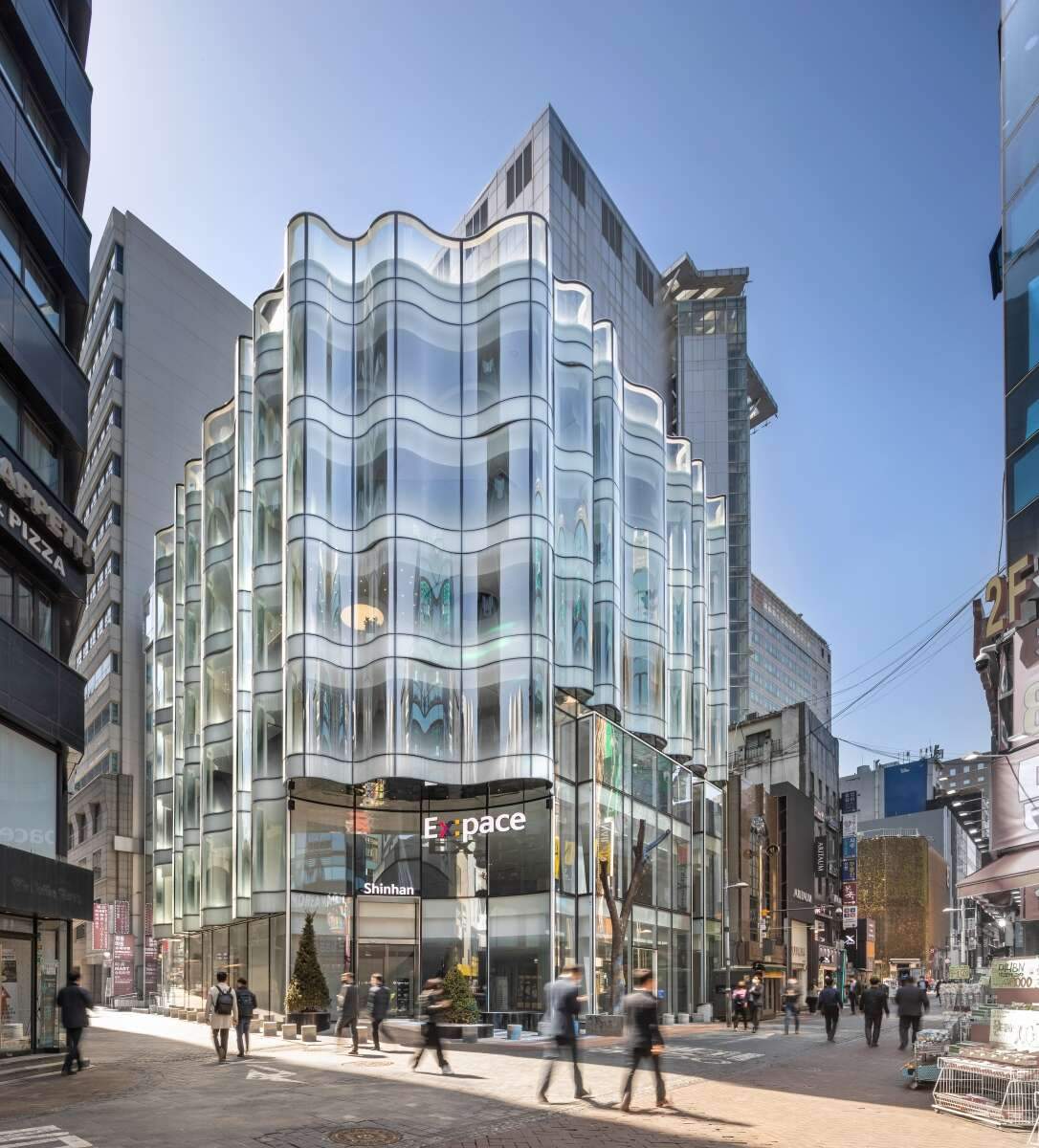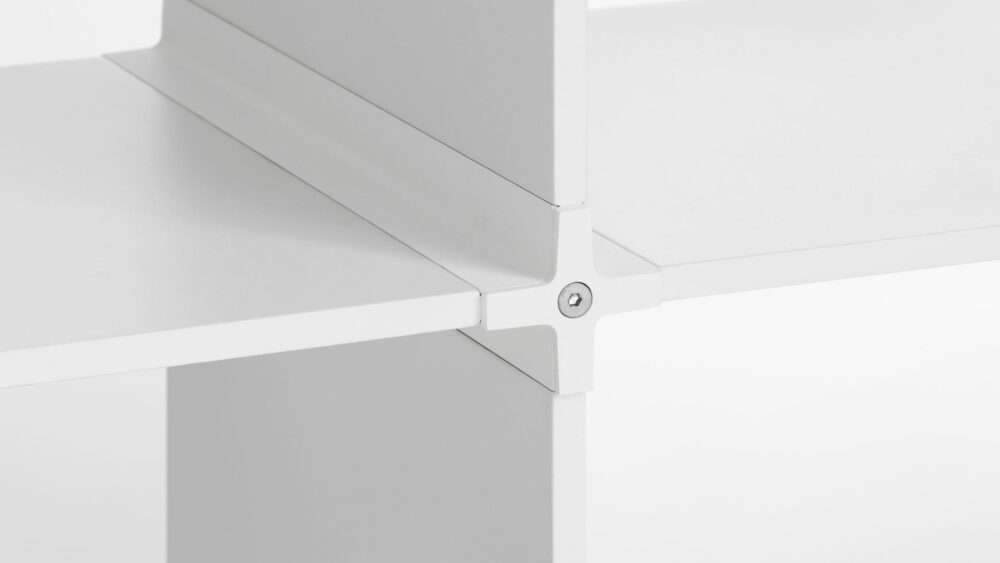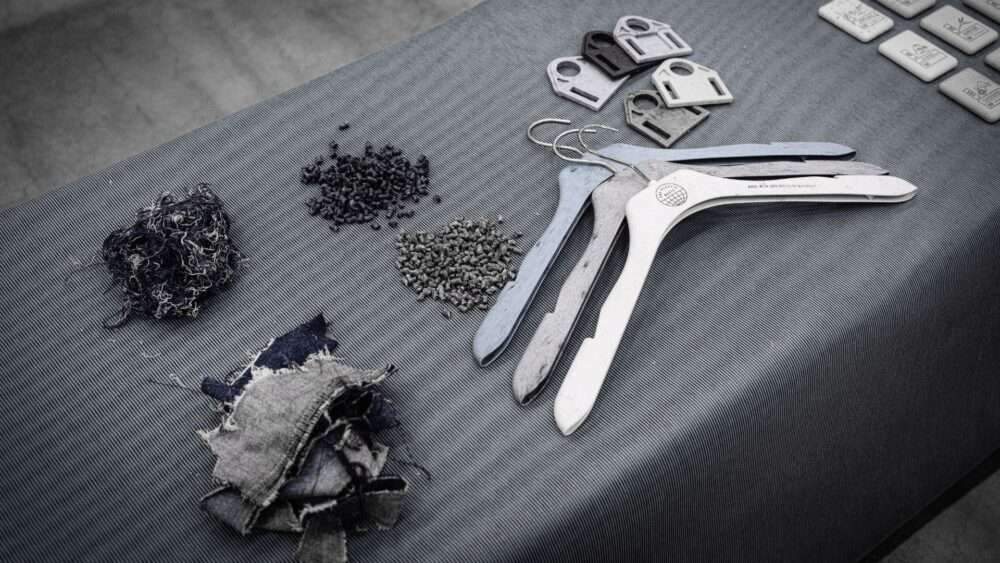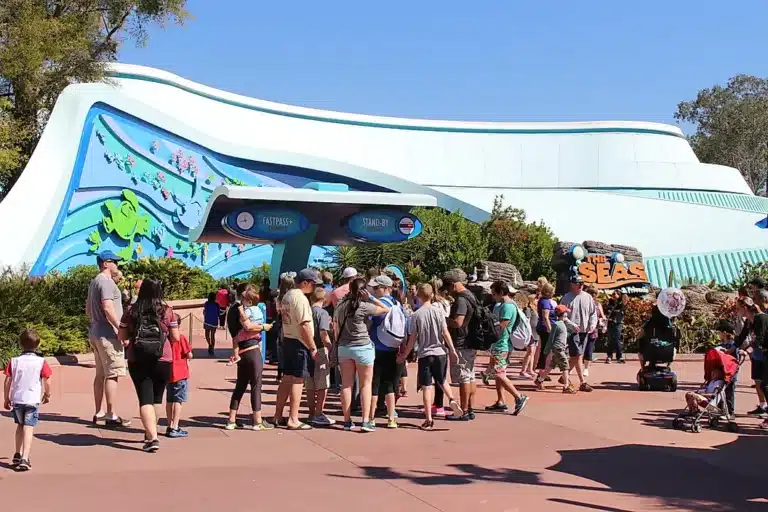Renovation of the facade of the EX PACE building
Renovation of the facade of the EX PACE building,
EX PACE building located near Myung-dong subway station, facing the intersection of two important streets in Seoul.
The area has grown rapidly into a high-density urban mass filled with a wide variety of retail stores, restaurants, and stores.
This area attracts tourists and shoppers at all times.
The current building dates back to 1992 and has since served the Shinhan Myeongdong Bank Station Branch,
until the owner company decided to renovate it.
The company’s decision was to provide spaces to accommodate the new banking systems and facilities.
Features of the new design
Curtains
Curtains are usually of special importance, because they always carry a surprise behind them,
such as highlighting an individual’s status, or honoring a place with its packaging.
For this setting, the curtains act as a figurative tool,
and are also the tool that distinguishes the building from the atmosphere around it.
The gentle curves of glass give the building a special character,
by capturing the ever-changing nature of light and the ways in which the space changes accordingly.
The height facing the road, which is 10 meters wide, was determined as three stories,
and the side facing the road, which was 6 meters wide, was one storey high, and only two stories in the cut corner.
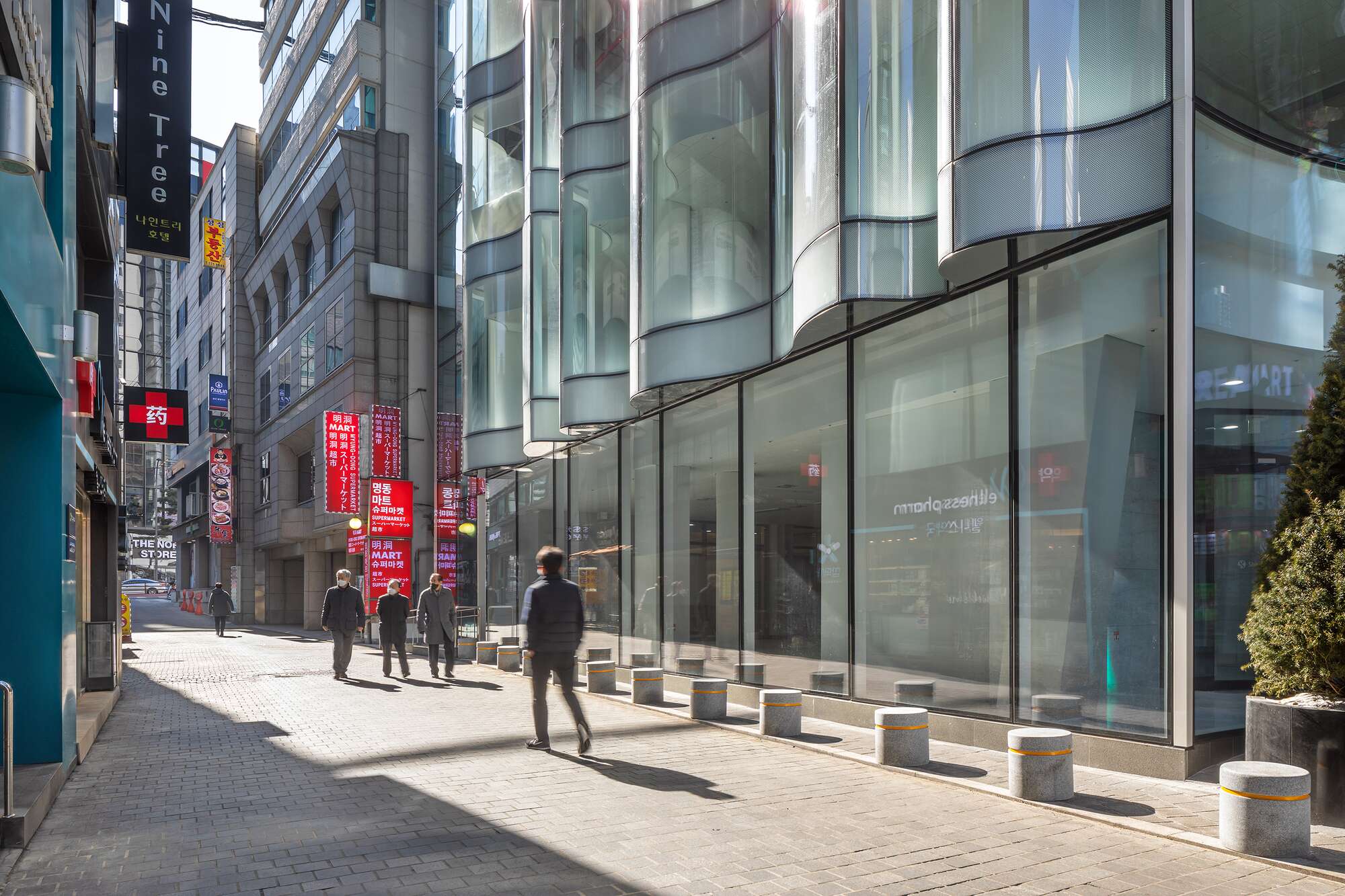
Renovation of the facade of the EX PACE building
Corners
When Francesco Borromini designed La Chiesa di San Carlo alle Quattro Fontane in Rome,
he was keen to set aside a special place for respite.
This place was distinguished by its urban context through its sculptures and fountains.
Almost in the same way, the buildings on Myeongdong Junction, an area distinguished for providing places to rest for citizens.
This building was selected for expansion and renovation in 2018, at that time,
the client wanted to increase the flow of people and provide financial information and various services.
This was only done by creating the building that would show the identity of the company in the middle of the commercial district.
The main entrance to the building is on the corner of the street, surrounded by concave glass walls and mirrored ceilings.
The place is distinguished by its landscape and benches, which make it a living room in the city where people stop and rest anywhere.
Another entrance was used in the two glass boxes, so that this block took the form of an independent volume due to the continuous supports at the corners.
Also the curved elevations of the upper reaches, and the way shapes are segmented and manipulated.
Stationary wave
The designer’s wavy elevation design was inspired by the way curtains and soft cotton fabrics swing.
Rather than adopting the kinetic facade, which changes shape as part of fluctuations in elevation,
it was seen as a constantly changing shape as you walk along the street,
covered in ceramic reliefs that gradually change in diameter.
Frit shield protects the interior and exterior of the building and also adds texture such as a soft cotton cloth that casts light
and shade on a solid glass surface.

Glass unit on the front of the building
Consisting of a 41.52mm thick insulating structure, it has multiple layers, such as double glazing, argon gas,
a Low-E coating to prevent radiant heat, and a set of shaded frit shields.
Layered glass curtain is manufactured and constructed from 320 curved glass units of 14 types,
after undergoing prototyping tests including reflectance and drop values.
High-strength steel has been used in the manufacture of the curtain wall frame that supports the 2D curved glass units,
to reduce the cross-section dimensions of each member as much as possible.
The steel poles are 45mm wide and 150mm wide, the length being made by bending due to the nature of the material which is difficult to extrude.
The ultra-mirror stainless steel finish at the bottom of the module reveals surfaces with reflective properties and creates contrast across the building’s exterior.
When units of the same curvature are intertwined vertically,
this material creates shallow shadows of different widths for the units at a depth of 15 cm.
The length of the beam supporting the height also changes accordingly to 50mm or 100mm,
and the super mirrored stainless steel is exposed in larger areas in the corner of the building.
Installed below the main entrance canopy, which appears with a wavelength of up to 76 cm, this reflective material creates an elegant ceiling for the space for public contribution.

